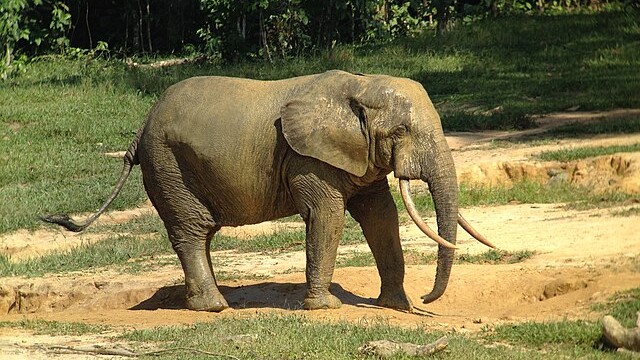DZANGA-SANGHA, Central African Republic — At dawn, a pale mist drapes the Dzanga Bai clearing. Forest elephants emerge from the shadows, their vast frames moving with slow, deliberate grace across sodden grass. Above, hornbills flash between branches while mangabeys chatter in the canopy. In the tree line, a small group of visitors — flanked by BaAka trackers — watch in silence, their cameras momentarily forgotten.
These scenes, once rare, have become more common in Dzanga-Sangha, a remote reserve in the country’s southwest. Long scarred by poaching, logging, and political unrest, the park now sits at the heart of a careful push to position the Central African Republic as a destination for eco-tourism — an experiment in blending conservation, community livelihoods, and a fragile peace.
“People come for the elephants,” said guide Frédéric Moboto, surveying the muddy salt lick. “But they stay for the forest, the quiet, the sense that something sacred is still alive here.”
A Forest at the Crossroads
Dzanga-Sangha is part of the Sangha Trinational, a UNESCO World Heritage Site it shares with Cameroon and the Republic of Congo. Spread over 4,500 square miles of lowland rainforest, it shelters forest elephants, western lowland gorillas, bongos, and a host of species found nowhere else.
Access was once nearly impossible. That has shifted through sustained conservation partnerships, most notably with the World Wide Fund for Nature, which for three decades has supported anti-poaching patrols, ecological research, and local livelihood programs. Now, the focus is expanding beyond preservation to sustainable tourism — a shift some see as an economic lifeline.
“Eco-tourism is not a cure-all,” said Annette Ndala, a conservation economist at the University of Bangui. “But in places where jobs are scarce and forests under threat, it can offer a path toward both dignity and biodiversity protection.”
Building Tourism from the Village Up
In Bayanga, the park’s gateway town, residents have been trained as guides, forest trackers, and guesthouse operators. The BaAka, historically marginalized hunter-gatherers, now lead ethnobotanical walks and storytelling sessions for visitors, drawing on generations of forest knowledge.
“It’s not just about animals,” said Léonie Gbéko, manager of Sangha Lodge, one of the reserve’s few operational eco-lodges. “It’s about people — and ensuring they benefit from safeguarding what they have lived alongside for centuries.”
The lodge, built from reclaimed wood and powered by solar energy, works with guests on conservation activities, from gorilla monitoring to habitat restoration. International partners, including the Rainforest Foundation UK and the United Nations Development Programme, have funded small grants for community-run tourism projects and park infrastructure.
Barriers to Growth
Despite rising interest, obstacles remain. Roads to Dzanga-Sangha turn to mud during the rainy season, and flights from Bangui are infrequent and expensive. Annual visitor numbers remain under 1,000 — far from the scale of East Africa’s safari hubs.
An official from the Ministry of Environment and Tourism described logistics as “a constant challenge,” yet noted a shift: “People are willing to come despite the difficulties.”
In April, the government unveiled a green growth strategy, supported by the African Development Bank, naming tourism as a pillar of economic diversification. The plan calls for upgrading park infrastructure, expanding vocational training, and marketing to high-end, low-impact travelers.
Guarding the Balance
Eco-tourism carries risks if poorly managed. Conservationists warn of habitat damage, cultural exploitation, and uneven benefits. Dzanga-Sangha’s management has sought to avoid these pitfalls by creating village committees to oversee projects and ensuring a share of tourism revenue funds schools, clinics, and water systems.
For the BaAka, tourism offers new income but also new questions. “We open our forest,” said elder Gervais Yandou. “But we must remember our steps.”
A Different Kind of Safari
By mid-morning, the sun casts silver light across the Sangha River. A safari truck pulls up to a forest trail. Visitors step out — a French couple, a Belgian ecologist — met by Moboto and two young guides in locally woven vests.
“It’s not the Serengeti,” Moboto said, smiling. “It’s ours. And it’s waiting.”
In a nation often defined by absence, Dzanga-Sangha offers a rare abundance — of life, of knowledge, and of connection. In its quiet way, it is a vision of what remains possible.
Sources:
- UNESCO World Heritage Centre. Sangha Trinational. Paris, 2024.
- World Wide Fund for Nature (WWF). Dzanga-Sangha Conservation Project Overview. Gland, 2024.
- African Development Bank. Central African Republic Green Growth Strategy. Abidjan, 2024.
- United Nations Development Programme (UNDP). Community-Based Tourism Initiatives in Central Africa. New York, 2023.


